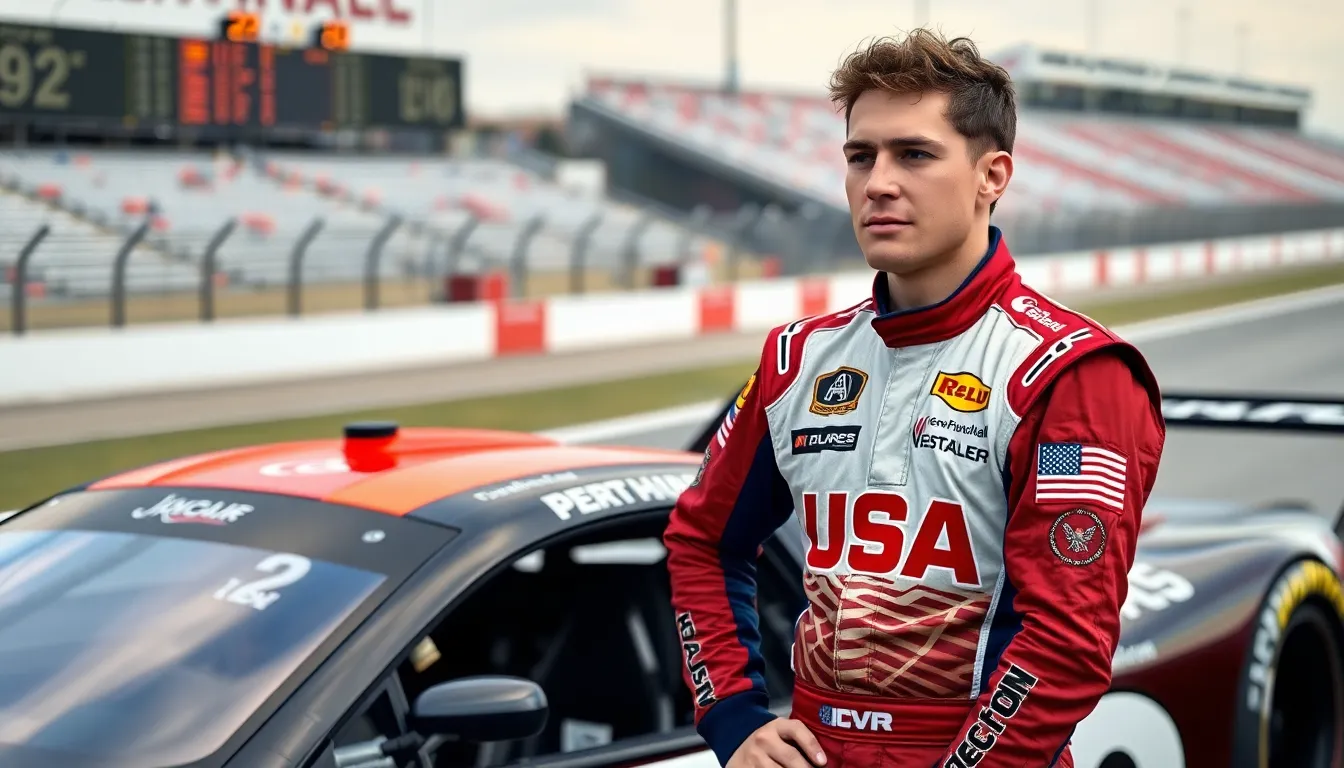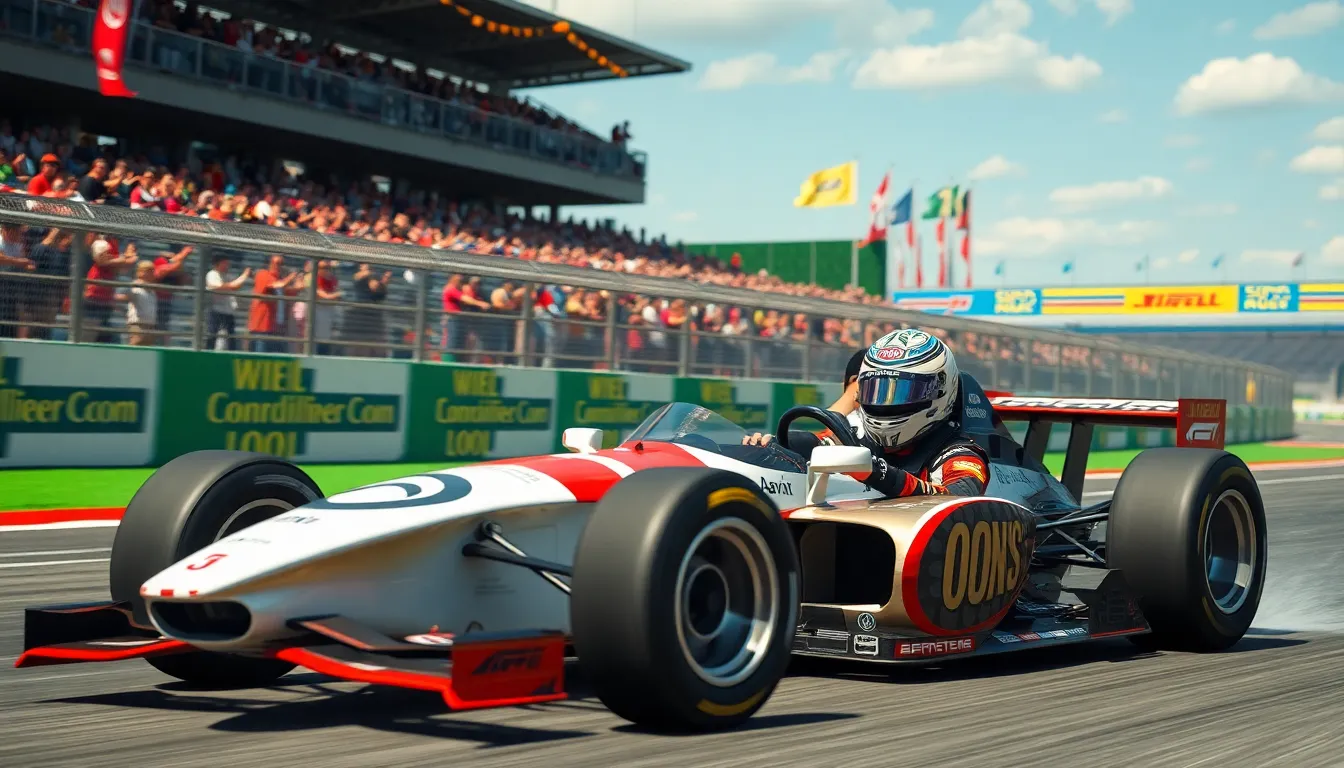In the high-octane world of motorsport, the qualifying lap format is the secret sauce that spices up the race weekend. Imagine a thrilling showdown where drivers unleash their inner speed demons, battling for that coveted pole position. It’s not just about who can go fast; it’s a tactical game of precision and timing that keeps fans on the edge of their seats.
Table of Contents
ToggleOverview of Qualifying Lap Format
Qualifying lap format plays a critical role in motorsport events. This format determines the starting grid for races, significantly impacting the drivers’ strategies. Each qualifying session typically lasts a predetermined duration, often between 12 to 15 minutes. During this time, drivers strive to set the fastest lap possible.
Drivers must navigate the track carefully while optimizing their speed. A clear track can provide an advantage, allowing for unobstructed laps. In contrast, traffic can hinder progress, forcing drivers to adapt their strategies. Teams often analyze data from previous sessions to predict optimal lap times and tire strategies.
Most series utilize a knockout format or a single-lap shootout. The knockout format eliminates slower drivers in stages to ensure the fastest competitors remain. Single-lap shootouts generate intense excitement as drivers attempt their best time in rapid succession.
Weather conditions also influence qualifying performance. Rain or temperature changes can lead to varying track conditions, challenging drivers to adjust their techniques. Teams monitor weather forecasts closely, ready to make quick decisions regarding tire selection and setup adjustments.
Ultimately, the qualifying lap format showcases both speed and skill. Drivers’ performances during qualifying can establish their momentum heading into the race. This strategic aspect of racing not only enhances the competition but also drives fan engagement and excitement.
Types of Qualifying Lap Formats

Different formats exist for qualifying laps, each with unique characteristics that impact strategy and excitement. Two popular formats include the single lap format and the multiple lap format.
Single Lap Format
The single lap format requires drivers to set their best lap time in one attempt. Each driver has a specific window, typically lasting around 12 to 15 minutes, to complete their lap. Timing plays a crucial role, as drivers must find the optimal moment on the track with minimal traffic. Performance can change significantly depending on tire conditions and track evolution. Drivers often rely on precise setups and timing to maximize speed during this brief opportunity. Many motorsport events, such as Formula One, utilize this format for its dramatic nature.
Multiple Lap Format
In contrast, the multiple lap format allows drivers to run several laps to achieve their fastest time. Within a set time frame, typically sharing a similar duration with the single lap format, drivers aim for the best overall time from their attempts. This format introduces variables such as tire wear and changing track conditions over time. Teams strategize to determine when to send drivers out for their fastest laps, considering factors like weather and competing drivers’ performance. Events like endurance races often incorporate this approach, enhancing overall excitement as drivers push limits across multiple laps.
Impact on Race Strategy
The qualifying lap format significantly affects race strategies, primarily by determining starting positions. During qualifying, drivers focus on their laps to secure the best possible grid spot, as this can influence their chances of success in the race.
Qualifying Position Importance
Securing a favorable qualifying position is critical. Starting near the front often leads to fewer on-track battles, reducing the risk of collisions. Drivers in optimal positions typically enjoy clean air, allowing for better performance. In contrast, those starting further back may face congestion and decrease their chances for a strong finish. Historical data shows that most race winners usually stem from the top few grid slots, underscoring the importance of qualifying success.
Tire Management Considerations
Tire management plays a vital role during qualifying sessions. Each format presents unique challenges, with single laps requiring consistent tire performance within a short window. Multiple lap formats offer distinct advantages, such as managing tire degradation for better grip. Teams assess tire choices carefully, considering weather and track conditions. Effective tire strategy not only influences qualifying speed but also sets the stage for race day performance. Adapting tire management strategies can thus create opportunities to outpace competitors in both qualifying and the race.
Technological Advances in Qualifying
Technological advancements significantly shape the qualifying lap format, enhancing competition dynamics and driver performance.
Data Analysis Tools
Teams leverage data analysis tools to optimize qualifying strategies. By utilizing telemetry data, engineers analyze real-time performance metrics. Various data points, such as tire temperatures and fuel loads, help teams make informed decisions. Insights gained from previous races inform adjustments that improve lap times. GPS technology tracks drivers’ exact positions on the track, allowing for strategic positioning during qualifying. Teams also analyze competitors’ data, enabling them to adjust their tactics in anticipation of rivals’ moves.
Simulation and Preparation
Simulations play a vital role in driver preparation for qualifying. Using advanced software, teams recreate track conditions, providing drivers with a virtual experience before heading out. Drivers practice various scenarios, including different starting positions and weather conditions. These simulations allow teams to refine setups and enhance understanding of tire performance under specific circumstances. Prior knowledge gained through simulations increases drivers’ confidence, maximizing their potential during the actual qualifying sessions. Each aspect of preparation contributes to achieving the fastest lap time possible.
The qualifying lap format is a thrilling aspect of motorsport that combines speed with strategy. It not only determines the starting positions but also sets the tone for the race ahead. Drivers must navigate various challenges including track conditions and tire management to secure their optimal grid spots.
As technology continues to evolve teams are better equipped to analyze performance and refine their strategies. This dynamic environment enhances competition and keeps fans engaged. Ultimately the qualifying process is more than just a precursor to the race; it’s a critical component that shapes the entire event and influences the outcome on race day.



